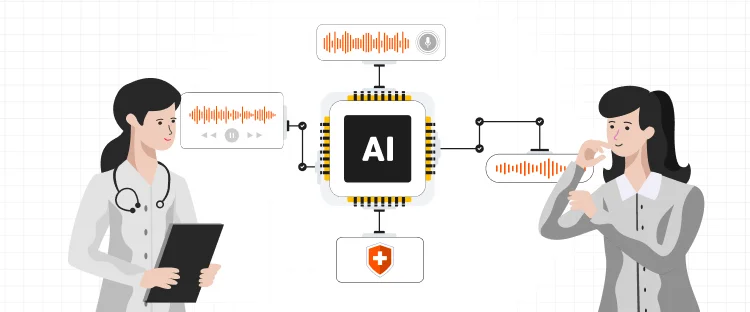There is a general misconception concerning a translator and interpreter. Many potential clients contact interpreters, saying they are looking for a professional translator, when in fact, they are looking for an interpreter.
The very similar nature of both translator and interpreter is enough to create that confusion, leading people to use both interchangeably. Let’s take a look at what they really are, how these two subjects of linguists are similar to each other and what are the differences between translator and interpreter.
Contrary to popular belief, interpretation isn’t the word-for-word translation of a spoken message. Instead, it’s all about paraphrasing and interpreters need to transpose the source language within the required context, preserving its original meaning but taking care to rephrase the idioms and other cultural-specific references in ways that is comprehensible to the target audience.
An interpreter needs to possess some skills such as the ability to deliver their message instantly (or simultaneously) with the original message, with no aid from dictionary or reference material. In a nutshell, an interpreter only resources are experiences and a good memory—and quick reflexes too.
Basically, a translator is required to work on information in a written form—be it websites, video subtitles, software or print. However, unlike interpreters, most translators use computer-aided tools (CATs) in their work. This refers to converting the source content into a file type that is easy to work with, applying a translation memory to the given text and filling in the required gaps.
As the translator works through each section of the text, he may need to refer to glossaries and style guides to ensure quality. After everything is done, the translator needs to pass the translation to another linguist to proofread and convert the document back to its original format for ensuring the closest possible match.
Read: Difference Between Translation and Transcription
Both the interpreters and translators are provided with a source and target language and both work only in their mother language. They both attract a message from the source language and convert it into a target language.
Despite the differences between the translator and interpreter, one thing that unites them together is the nature of their job—they are both linguists and therefore, both require professional qualifications in addition to their skills.
The translators and interpreters are distinct from each other but these are the main categories to distinguish them through the viewpoint of a project:
Accuracy and Precision:
When it comes to having ample time to achieve accuracy and precision, translators surely have it more than the interpreters. This means that unlike interpreters, they have enough time to consult glossaries, dictionaries and other reference materials before delivering the final results.
Interpreters, on the other hand, barely have time to process the original message thoroughly and need to interpret the original message instantly (simultaneously or immediately afterword).
Tools and Helping Material:
As mentioned previously, translators have the advantage of using computer-aided tools to assist them at the time of translation, not to mention the dictionaries, computers, glossaries and reference material that they have access to.
On the contrary, an interpreter may only use headphones, microphone or a notepad when interpreting. On the plus side, they take their vast knowledge and the memory stored in their brain to assist them.
Direction of Message:
An interpreter is required to be fluent in both source and target language as they have to interpret in both the directions instantaneously. A translator works in only one direction: his own. Considering that, he needs to translate source content into their mother tongue and are not required be have fluency in the source language.
Acumen and Skills:
Although both translators and interpreters are required to have the proficiency to make metaphors, analogies and idioms resonate with the target audience, an interpreter has a tougher job than the translator.
He is required to capture tone, voice quality, inflections and other cues of the verbal communication and interpret it to the audience correctly. A translator, having to work on the written text, does not have to go through that hassle.
Now that the differences between the translator and interpreter are clear, the question you should now be asking yourself is: “Is my business ready to explore the international horizons? Do I need to hire an interpreter or a translator to aid me with the process?” .Asking the right questions will open the way to getting your business ready for international audience.

Many global companies, foreign governments and Iranian are hoping to see an increase in investment in Iran after declaring the
Read More
Artificial intelligence has taken a big space in almost every industry. There is also a widespread acceptance that AI is
Read More
Persuasion is all about manipulating other people behavior. At first it might sound immoral but it doesn’t have to be.
Read More
Now days everyone is searching for good ideas for their company they wanted to be more creative, they wanted to
Read More
Technology has now much diverse roots in this age of development. Now it is not wrong to say, that you
Read More
Localization is the practice of altering the functional properties of a product and also its characteristics. This is easily done
Read More
It is very important to know the fast and fearless front-facing trends of marketing your business in the digital age.
Read More
Nigerian Customer Purchasing Trends – All You Need To Know To Increase Your Sales! Online shopping is one of he many
Read More
Online Customer Purchasing Trends – Why the Polish Market Is Good For Your Sales? The Polish consumers are one of the
Read More


Document Translation
Professional document translation by native expertsApp Localization
Get more downloads by adapting your app for different target marketsVideo Translation
Multilingual translation and subtitling servicesWebsite Localization
Adapt your website into multiple contexts for global reachSoftware Localization
Adapt your software for global usersGame Localization
Reach new players with localized gameplayMTPE
Refine AI translations for natural fluencyBusiness Translation
Professional translation for business documents and websitesDTP & File Conversion
Professional DTP and File conversion, supporting multiple file formatsProofreading
Perfect your content with expert review© Copyright 2025 MarsTranslation